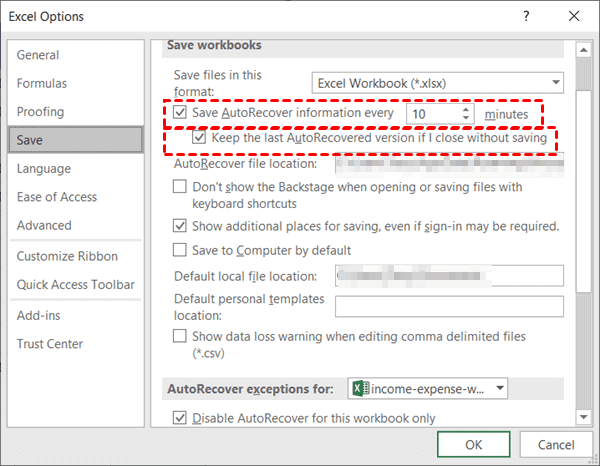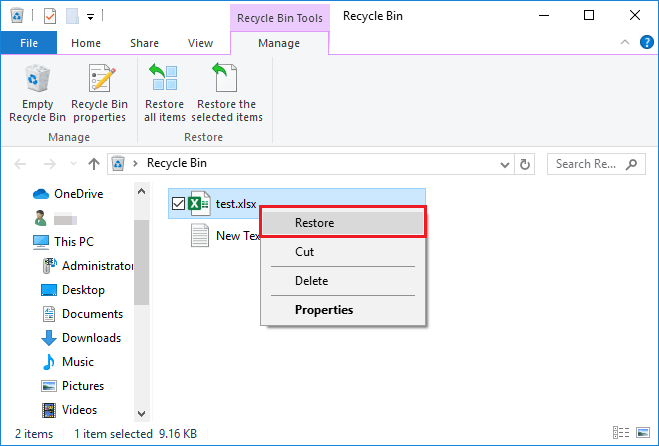Recover Deleted Excel Sheets: Quick and Simple Guide

Accidentally deleting an Excel sheet can be a heart-stopping moment, especially if it contains important data. However, the good news is that recovery is often possible, and with the right steps, you can restore your lost Excel sheets quickly. Whether you've lost your work due to a sudden system crash, accidental deletion, or a corrupted file, this guide will walk you through various methods to recover your deleted Excel sheets efficiently.
Immediate Steps to Take After Deletion

When you realize you’ve deleted an Excel sheet, follow these immediate steps:
- Stop working on the Excel file to prevent overwriting data.
- Close the workbook and do not save changes if you’ve already reopened it.
- Check the Recycle Bin or Trash on your computer for the file.
- Backup any existing versions if available.
⚠️ Note: Do not overwrite or save any changes to the workbook where you lost data as it might overwrite recoverable data.
Using the Recycle Bin/Trash

The first place to look for a deleted Excel file is in your system’s Recycle Bin (Windows) or Trash (MacOS). Here’s how:
- Open the Recycle Bin or Trash on your computer.
- Search for your Excel file by name or by date of deletion.
- Right-click on the file and select “Restore” to recover it to its original location.
🗑️ Note: Files are automatically moved to the Recycle Bin/Trash upon deletion, but make sure you don’t manually empty it!
Using Excel’s AutoRecover Feature

Excel has an AutoRecover feature that saves recovery files automatically at specified intervals:
- Open Excel without opening the workbook.
- Go to File > Info > Manage Workbook > Recover Unsaved Workbooks to access the AutoRecover file list.
- Browse through the list and select your file to recover.
💾 Note: The AutoRecover files can be found in the %APPDATA%\Microsoft\Excel\ folder on Windows.
Use Version History

If you have OneDrive or SharePoint integration with Excel, you can access the version history:
- Open the Excel file.
- Go to File > Info > Manage Workbook > Browse Version History.
- Choose the version where your sheet still existed and recover the entire workbook or the lost sheet.
Professional Recovery Tools

For more severe cases or when the above methods fail, consider using professional data recovery tools:
| Software | Features |
|---|---|
| Stellar Data Recovery | Excel Recovery, Quick Recovery, Deep Scan |
| Recuva | Deleted File Recovery, Restore Wizard, Virtual Hard Drive Support |
| EaseUS Data Recovery Wizard | File Recovery, Data Protection, Preview Before Recovery |

🔍 Note: Always back up your current data before using recovery tools to avoid further data loss.
Preventive Measures for Data Loss

To minimize the risk of losing important data in the future, follow these preventive measures:
- Use AutoSave and AutoRecover options in Excel.
- Regularly back up your Excel files.
- Create copies of important workbooks.
- Maintain cloud storage synchronization.
Summing Up

In this guide, we’ve explored multiple ways to recover deleted Excel sheets. From immediate actions to take after deletion, using built-in features like the Recycle Bin or AutoRecover, to employing professional recovery software, you have several options to retrieve your data. Always remember to take preventive steps like regular backups and enabling autosave features to protect against future data loss.
What should I do immediately after deleting an Excel sheet?

+
Stop working on the file, close it without saving changes, and check the Recycle Bin or Trash for the deleted file.
Can I recover an Excel sheet if I didn’t have AutoRecover enabled?

+
Yes, you can try using version history if you have cloud storage integration or employ professional recovery tools.
How can I prevent data loss in Excel?

+
Enable AutoSave and AutoRecover, regularly backup files, and synchronize workbooks with cloud storage.
Are there free tools for Excel sheet recovery?

+
Yes, some software like Recuva offers a free version with limited features for basic recovery tasks.



